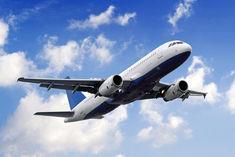
From road to sea and rail to air, logistics providers are looking for new ways to bring produce to market fresher, quicker and with a lower carbon footprint than ever before. But there are many issues and challenges to overcome.
Rail freight
The arrival of an SNCF TGV freight train at London’s St Pancras station recently marked the first full-scale test of high-speed, electrically powered rail freight services between mainland Europe and London, named Euro CAREX (Cargo Rail Express).
The TGV freight trains, which will not enter commercial service before 2015, have the capability to shrink journey times significantly for time-sensitive and high-value goods, including perishables.
For example, fruit and vegetables picked in southern France in the morning could be delivered into east London in the evening of the same day, ready for the shelves the following day - a 50 per cent reduction in surface transit times by road.
TGVs have been in service in France since the 1980s, running at speeds of up to 270kph. While they would be too large for normal UK rail lines, the opening of the high-speed rail route, HS1, allows them to be operated right through to London.
As part of a drive towards more sustainable development in freight transport, there is growing support for the transfer of goods from road to rail, with perishables being very much to the fore.
In 2010, a €19 million new rail freight terminal entered service at the Paris Rungis wholesale fresh produce market on the outskirts of the capital.
This doubled Rungis’s handling capacity for rail-borne perishables shipments to 400,000 tonnes annually.
On an average of six days out of seven, two trains leave Perpignan in south-west France for Rungis, carrying fruit and vegetables in refrigerated wagons. The trains reach their destination just a few hours before the market’s wholesalers open up for the day’s business.
Road freight
On the roads, hauliers are looking to overcome a number of issues, with a greater focus on backhauling, even more accurate product tracking and monitoring and early trials of electrically powered vehicles taking place.
Taxation continues to be a major issue for the sector and the government’s recent Budget failed to impress the Freight Transport Association, who instantly criticised the chancellor’s decision not to cut fuel duty rates, a decision they believe “has condemned UK industry to suffer the consequences of even higher fuel bills and operational costs at a time when the world price of oil stands at a four-year high, with every prospect of further price rises in the coming months”. The FTA insists George Osborne must reconsider plans for a 3p per litre increase this August.
“Independent research has shown that a cut in diesel duty of 2.5p per litre would have created an additional 175,000 jobs with no loss of revenue to the Exchequer,” says FTA’s chief economist Simon Chapman, adding: “By contrast, the fuel duty increase of 3p per litre scheduled for August will increase the average cost of lorry operation by around £1,200 per vehicle per year - all on top of other price rises which are inevitable as a consequence of the current and anticipated increases in the world price of oil. Higher commercial vehicle operating costs inevitably impact on the price of everything we use or consume, and contribute to inflation and higher consumer prices.”
On a more positive note, FTA has welcomed the announcement that Vehicle Excise Duty levels for commercial vehicles will be frozen.
Sea freight
On the seas, diminishing margins and the high profits needed to stay in business remain key issues for shipping lines. A more recent challenge is combating piracy on the high seas, which can come at a high cost.
“It’s a growing problem and one that is now not restricted to vessels far from shore,” says Rob Shelley, CEO of Maritime Cargo Services. “Only this month, armed pirates raided a cargo ship carrying refrigerated containers full of Irish fish which was actually anchored in a Nigerian port. Having ransacked the ship they made good their escape taking several of the ship’s officers with them.”
The problem is now being dealt with at the highest levels with prime minister David Cameron joining Ban Ki-moon, secretary general of the United Nations, and US secretary of state Hillary Clinton at a recent international conference on piracy where he pledged a crackdown on Somali pirates and their ‘kingpins’ who demand ransoms for cargo vessels and their crew.
Despite this, overall confidence levels in the shipping industry have increased slightly this year, reaching their highest level since May 2011, according to a recent industry survey.
The slight rise is believed to have been driven by expected rate increases over the coming year, although there were a number of differing opinions with some respondents saying that it was unbelievable that some owners are still ordering new ships - and that freight levels cannot go much lower.
Shippers continue to innovate, with the likes of Maersk expanding its fleet with its new 18,000 TEU containerships, and new technology is allowing perishables to be shipped further across the world than ever before.
AIRfreight
The biggest issue affecting airfreight, understandably, is the price of fuel, with the International Air Transport Association downgrading its forecast for airlines to turn a global profit of $3bn for a 0.5 per cent margin in 2012. That is primarily due to rising oil prices, though at least there was some good news with figures showing a 5.2 per cent rise in cargo demand in February compared to a year ago. -